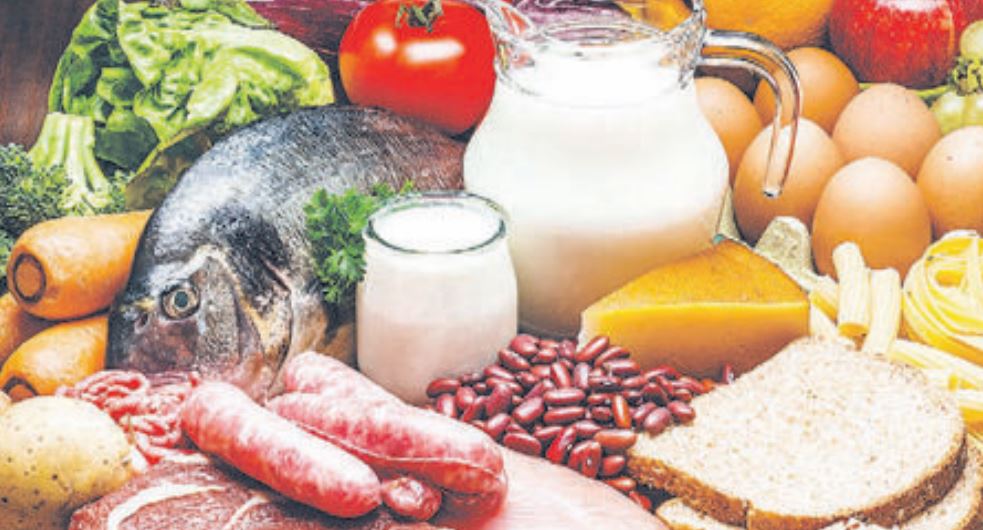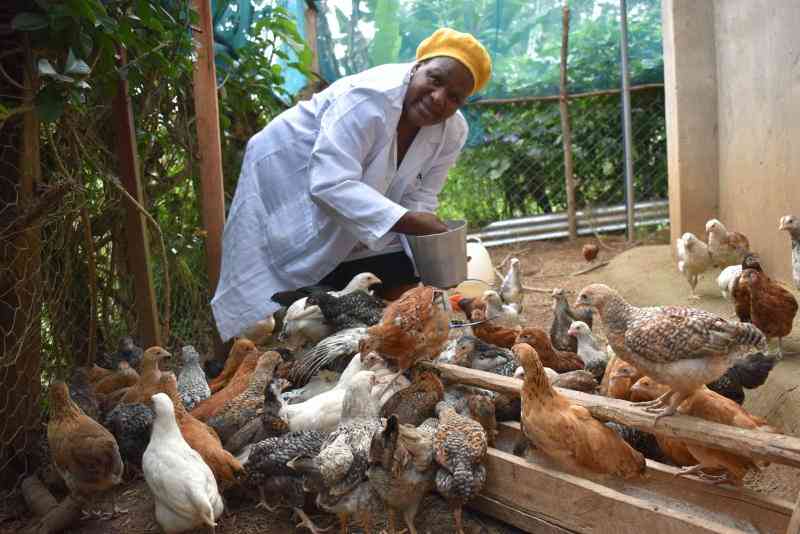
1. Choose healthier carbohydrates
All carbohydrates affect blood sugar levels, so it is important to know which foods contain carbohydrates, choose the heathier sources and be aware of the portions you eat. Healthier sources of carbs include whole grains, fruit and vegetables, pulses and dairy, so limit your intake of refined carbohydrates such as white bread, white rice and highly processed cereals.
If you have Type 1 diabetes, carb-counting can help manage your blood glucose levels. You can ask for advice from a dietitian for help with this.
2. Use less salt
Having too much salt increases risk of high blood pressure. This in turn increases your risk of heart disease and stroke, which people with diabetes are already at higher risk of. Aim for a maximum of 6g (1tsp) of salt per day. As many pre-packaged foods already contain salt, try to rely less on processed foods – check food labels if you are not sure how much salt they contain. A good way to cut down on processed foods is to cook from scratch at home. You can also adapt recipes by cooking with herbs, spices and peppers to replace salt.
3. Eat more pulses and fish
Eating too much red and processed meat such as bacon, ham and sausages is associated with various health conditions such as CVD and certain types of cancers. Replace these with pulses, eggs, fish, poultry, and nuts. Beans, peas, lentils and dhal are high in fibre, have little effect on blood glucose levels and can be good alternatives to meat.
Aim for two portions of oily fish a week. They are rich in omega-3 oil (polyunsaturated fat) which helps protect against heart disease, which people with diabetes are at higher risk of. Examples include salmon, mackerel, sardines and pilchards.
4. Include fruit and vegetables
Try to eat more fruit and veg at mealtimes and have them as snacks. This can help you get the range of vitamins, minerals and fibre your body needs. Fruits contain natural sugar, so choose whole fruit instead of fruit juices, and spread your intake through the day rather than eating huge portions at a go. Choose from fresh, frozen, tinned or dried.
5. Choose healthier fats
Foods such as nuts, seeds, avocados, olive oil, and oily fish have good mixtures of healthy fats. Swap saturated fats such as palm oil, coconut oil, ghee, butter and lard for vegetable oils such as olive oil, rapeseed oil, groundnut oil, corn oil and sunflower oil. Grill, steam or bake foods rather than frying.
6. Reduce your intake of sugar
Swap sugary drinks, energy drinks and fruit juices for water, unsweetened milk, unsweetened tea and coffee. Try to reduce sugary foods such as cakes, pastries and biscuits, and foods with added fructose and polyols. Artificial sweeteners may be an option to help you reduce your intake of sugars and calories.
Stay informed. Subscribe to our newsletter
7. Drink sensibly
If you drink alcohol, limit your intake to a maximum of 14 units a week, avoid binge drinking and go several days a week without alcohol. Remember: 1 unit is a single measure (25ml) of spirits, or half a pint (284ml) of normal strength lager, beer or cider, but a small (125ml) glass of wine is actually 1.5 units. Alcohol is high in calories. To lose weight, consider cutting back. It is not a good idea to drink on an empty stomach, especially if you take insulin or other diabetes medications that put you at risk of hypos, as alcohol can make hypos more likely to happen.
8. Don’t bother with so-called diabetic foods
These products offer no special benefits to people with diabetes and may still affect your blood glucose levels. They may contain as much fat and calories as ordinary versions, are often expensive and can have a laxative effect.
Courtesy of BBC
 The Standard Group Plc is a
multi-media organization with investments in media platforms spanning newspaper
print operations, television, radio broadcasting, digital and online services. The
Standard Group is recognized as a leading multi-media house in Kenya with a key
influence in matters of national and international interest.
The Standard Group Plc is a
multi-media organization with investments in media platforms spanning newspaper
print operations, television, radio broadcasting, digital and online services. The
Standard Group is recognized as a leading multi-media house in Kenya with a key
influence in matters of national and international interest.
 The Standard Group Plc is a
multi-media organization with investments in media platforms spanning newspaper
print operations, television, radio broadcasting, digital and online services. The
Standard Group is recognized as a leading multi-media house in Kenya with a key
influence in matters of national and international interest.
The Standard Group Plc is a
multi-media organization with investments in media platforms spanning newspaper
print operations, television, radio broadcasting, digital and online services. The
Standard Group is recognized as a leading multi-media house in Kenya with a key
influence in matters of national and international interest.










